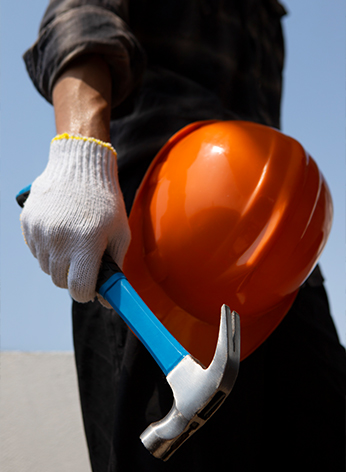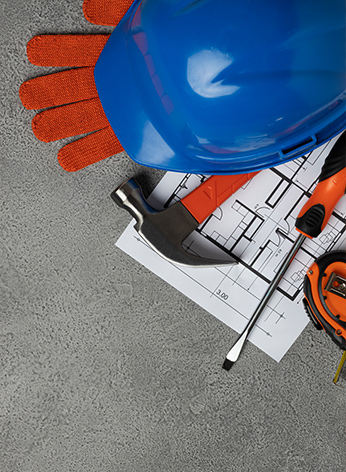Building is one of the most physically straining as well as risky occupations. Day to day, the construction worker confronts and overcomes risks that arise due to operating heavy machinery, working at heights and changes in the weather. Thus, to guarantee the construction site safety of a construction site is not only viewed as an obligation of the employer, but it is also deemed as a responsibility of each and every person present on the site.
Despite significant advancements in workplace safety protocols, construction related accidents still account for a large percentage of workplace injuries and fatalities. However, with proper training, adherence to safety regulations, and proactive practices, these incidents can be minimized. In this article, we will outline 10 essential safety tips to enhance construction worker safety and create a safer working environment.
The adoption of such measures by employers will create a conducive environment for site safety practices which will enable employees to focus on their health and wellness while executing their duties. These are fundamental, let’s discuss ways to enhance standards of construction safety.
1. Wear Appropriate Personal Protective Equipment (PPE)
- Hard hats protect the head from falling debris or low hanging obstacles.
- Safety glasses shield the eyes from dust, debris, and chemical splashes.
- High visibility clothing makes workers visible to equipment operators and other colleagues.
- Gloves and boots offer protection against cuts, punctures, and electrical hazards.
Employers must ensure that PPE is readily available, properly maintained, and appropriately fitted to every worker. Adhering to PPE guidelines significantly enhances construction safety and prevents avoidable injuries. Workers must also be trained on how to use and maintain PPE to ensure maximum effectiveness.

2. Conduct Regular Safety Training
There is a need for constant upgrading of skills wherever construction work is being carried out. Even the most experienced workers are subjected to continuous safety training practices so as to familiarize themselves with the up to date practices and policies advocated at the work site.
New employees should undergo a comprehensive orientation program to familiarize themselves with site specific hazards and safety protocols. Additionally, workers must receive tool specific training to operate equipment safely and understand maintenance procedures. Regular emergency drills ensure everyone knows what to do in case of fire, chemical spills, or other emergencies.
Providing access to online resources or printed manuals can further reinforce training sessions. These initiatives not only reduce risks but also instill a culture of workplace safety that prioritizes awareness and preparedness.
3. Conduct Daily Safety Inspections
Daily safety inspections are crucial for identifying potential hazards and ensuring construction site safety. Supervisors must:
- Check for any faulty or malfunctioning equipment.
- Inspect scaffolding, ladders, and elevated surfaces for stability.
- Monitor work areas for environmental hazards like wet floors or loose cables.
By addressing these issues promptly, companies can prevent accidents and create a safer work environment. Regular inspections reinforce the importance of site safety practices and encourage workers to report hazards. Additionally, supervisors can use checklists to ensure no detail is overlooked, making inspections more efficient and thorough.
4. Follow Proper Lifting Techniques
Musculoskeletal injuries are among the most common issues faced by construction workers. To enhance construction worker safety, proper lifting techniques should be practiced.
Workers should bend at their knees, not their waist, and keep the load close to their body to avoid strain. It is essential to avoid twisting while lifting or carrying heavy objects and to use mechanical aids like hoists or dollies when necessary.
To ensure the safety of employees in the workplace, employers should also train them on the use of ergonomic practices as well as provide devices and equipment that will help him or her to minimize physical activities that may cause straining. These practices when embraced and practiced in everyday activities drastically cuts down to the minimum or eliminates the chances of straining or injuring oneself thereby increasing the level of safety within the workplace.

5. Ensure Proper Scaffolding Setup
Scaffolding accidents are a major contributor to construction related injuries. Ensuring the proper setup and use of scaffolding is vital for construction safety. Scaffolds must be erected on stable ground, and their ability to bear the intended load should always be verified. Guardrails and toe boards must be provided to prevent falls.
Workers should also receive adequate training in scaffolding use to minimize risks and uphold construction site safety standards. A lack of awareness about proper scaffolding use can lead to severe accidents that are otherwise preventable. Additionally, all scaffolding materials must be inspected regularly to ensure they remain in good condition.
6. Implement Fall Protection Measures
Falls remain the leading cause of fatalities in the construction industry. To ensure construction worker safety, employers should implement comprehensive fall protection measures:
- Install guardrails, safety nets, and personal fall arrest systems (PFAS).
- Ensure all elevated surfaces are secure and slip resistant.
- Train workers to recognize and avoid fall hazards.
Taking proactive steps to address fall risks can make a significant difference in improving construction safety outcomes. Furthermore, advanced technologies like wearable sensors can alert workers to potential fall risks, adding an extra layer of protection.
7. Maintain Equipment and Tools
Poorly maintained tools and machinery are a common source of accidents on construction sites. Regular maintenance schedules are crucial for ensuring workplace safety and preventing equipment related mishaps.
Supervisors should regularly check for wear and tear, ensure that tools are functioning correctly, and address any issues before equipment is used. Encouraging workers to report damaged tools immediately further strengthens construction site safety protocols and prevents accidents before they happen. Maintenance logs can help track the condition of equipment and ensure timely repairs.
8. Create a Safe Traffic Management Plan
On busy construction sites, vehicular and pedestrian traffic can pose significant risks. A well designed traffic management plan is essential for maintaining site safety practices. Designating specific pathways for vehicles and pedestrians, using clear signage and barriers, and assigning spotters to assist drivers in blind spots are key measures to prevent collisions.
Employers should also consider implementing technology such as GPS tracking or real time alerts to monitor vehicle movements. By implementing these strategies, employers can significantly enhance construction worker safety in high traffic zones.
9. Promote a Culture of Communication
Effective communication is the cornerstone of construction safety. Workers should feel empowered to report hazards without fear of repercussions, provide feedback on safety protocols, and participate in toolbox talks to discuss daily tasks and associated risks.
A collaborative approach fosters a proactive attitude toward workplace safety, benefiting everyone on site. Open communication channels help identify and address potential risks before they escalate into serious incidents. Employers can also use mobile apps or communication platforms to streamline the reporting process and improve response times.
10. Stay Hydrated and Monitor Health
As is the case in most physical jobs, construction work also includes prolonged exposure to severe weather conditions which in turn can result to such conditions as dehydration, heat exhaustion and hypothermia. For the safety of the construction workers, it is important to ensure they have access to clean drinking water and that these workers take breaks in the shade or an air conditioned place regularly.
Supervisors should also monitor workers for signs of fatigue or illness. Providing education on recognizing symptoms of heat stress or cold related conditions can further enhance preparedness. Encouraging workers to prioritize their health and well being contributes to a safer and more productive work environment.
By following these 10 safety tips, construction companies can significantly enhance construction site safety while fostering a culture of accountability and care. Each tip reinforces the importance of workplace safety and empowers workers to take ownership of their well being. Whether through proper training, effective communication, or the use of appropriate PPE, every effort counts in creating a safer future for the construction industry.




